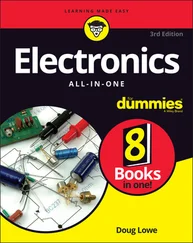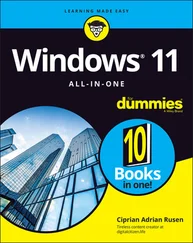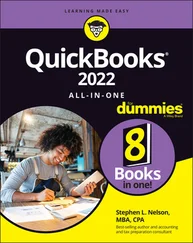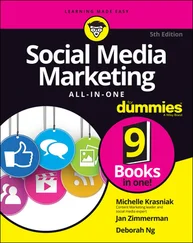1 Register your book or ebook at Dummies.com to get your PIN. Go to www.dummies.com/go/getaccess .
2 Select your product from the drop-down list on that page.
3 Follow the prompts to validate your product, and then check your email for a confirmation message that includes your PIN and instructions for logging in.
If you do not receive this email within two hours, please check your spam folder before contacting us through our Technical Support website at http://support.wiley.com or by phone at 877-762-2974.
Now you’re ready to go! You can come back to the practice material as often as you want — simply log on with the username and password you created during your initial login. No need to enter the access code a second time.
Your registration is good for one year from the day you activate your PIN.
You can use this book in a variety of ways. If you’re reading without immediate time pressure from a test or homework assignment, start at the beginning and keep going, chapter by chapter, to the end. If you do this, you’ll be surprised by how much of the math you may have been dreading will be almost easy. Additionally, setting up some solid groundwork is a great way to prepare for what follows later in the book.
If your time is limited — especially if you’re taking a math course and you’re looking for help with your homework or an upcoming test — skip directly to the topic you’re studying. Wherever you open the book, you can find a clear explanation of the topic at hand, as well as a variety of hints and tricks. Read through the examples and try to do them yourself, or use them as templates to help you with assigned problems.
Unit 1
Getting Started with Basic Math & Pre-Algebra
In This Unit …
1 Chapter 1: Playing the Numbers Game Inventing Numbers Understanding Number Sequences Four Important Sets of Numbers
2 Chapter 2: The Big Four Operations The Big Four Operations Applying the Big Four Operations to Larger Numbers
Chapter 1
IN THIS CHAPTER
 Finding out how numbers were invented
Finding out how numbers were invented
 Looking at a few familiar number sequences
Looking at a few familiar number sequences
 Examining the number line
Examining the number line
 Understanding four important sets of numbers
Understanding four important sets of numbers
One useful characteristic of numbers is that they’re conceptual, which means that, in an important sense, they’re all in your head. (This fact probably won’t get you out of having to know about them, though — nice try!)
For example, you can picture three of anything: three cats, three baseballs, three tigers, three planets. But just try to picture the concept of three all by itself, and you find it’s impossible. Oh, sure, you can picture the numeral 3, but threeness itself — much like love or beauty or honor — is beyond direct understanding. But when you understand the concept of three (or four, or a million), you have access to an incredibly powerful system for understanding the world: mathematics.
In this chapter, I give you a brief history of how numbers likely came into being. I discuss a few common number sequences and show you how these connect with simple math operations like addition, subtraction, multiplication, and division.
After that, I describe how some of these ideas come together with a simple yet powerful tool: the number line. I discuss how numbers are arranged on the number line, and I also show you how to use the number line as a calculator for simple arithmetic. Finally, I describe how the counting numbers (1, 2, 3, …) sparked the invention of more unusual types of numbers, such as negative numbers, fractions, and irrational numbers. I also show you how these sets of numbers are nested — that is, how one set of numbers fits inside another, which fits inside another.
Historians believe that the first written number systems came into being at the same time as agriculture and commerce. Before that, people in prehistoric, hunter-gatherer societies were pretty much content to identify bunches of things as “a lot” or “a little.” They may have had concepts of small numbers, probably less than five or ten, but lacked a coherent way to think about, for example, the number 42.
Throughout the ages, the Babylonians, Egyptians, Greeks, Hindus, Romans, Mayans, Arabs, and Chinese (to name just a few) all developed their own systems of writing numbers.
Although Roman numerals gained wide currency as the Roman Empire expanded throughout Europe and parts of Asia and Africa, the more advanced system that was invented in India and adapted by the Arabs turned out to be more useful. Our own number system, the Hindu-Arabic numbers (also called decimal numbers), is mainly derived from these earlier number systems.
Understanding Number Sequences
Although humans invented numbers for counting commodities, as I explain in the preceding section, they soon put them to use in a wide range of applications. Numbers were useful for measuring distances, counting money, amassing armies, levying taxes, building pyramids, and lots more.
But beyond their many uses for understanding the external world, numbers have an internal order all their own. So numbers are not only an invention, but equally a discovery: a landscape reflecting fundamental truths about nature, and how humans think about it, that seems to exist independently, with its own structure, mysteries, and even perils.
One path into this new and often strange world is the number sequence: an arrangement of numbers according to a rule. In the following sections, I introduce you to a variety of number sequences that are useful for making sense of numbers.
One of the first facts you probably heard about numbers is that all of them are either even or odd. For example, you can split an even number of marbles evenly into two equal piles. But when you try to divide an odd number of marbles the same way, you always have one odd, leftover marble. Here are the first few even numbers:

You can easily keep the sequence of even numbers going as long as you like. Starting with the number 2, keep adding 2 to get the next number.
Similarly, here are the first few odd numbers:

The sequence of odd numbers is just as simple to generate. Starting with the number 1, keep adding 2 to get the next number.
Patterns of even or odd numbers are the simplest number patterns around, which is why kids often figure out the difference between even and odd numbers soon after learning to count.
Counting by threes, fours, fives, and so on
Читать дальше
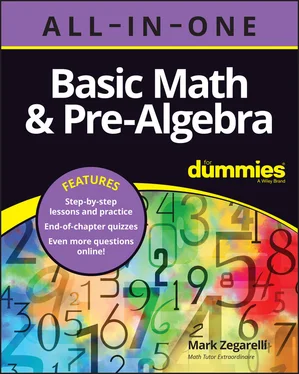
 Finding out how numbers were invented
Finding out how numbers were invented



